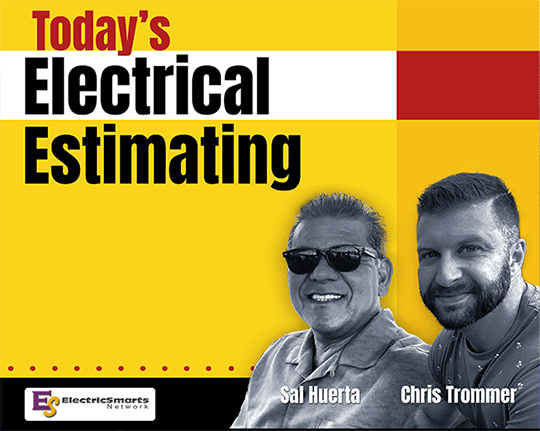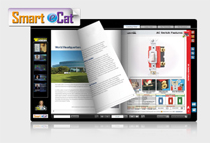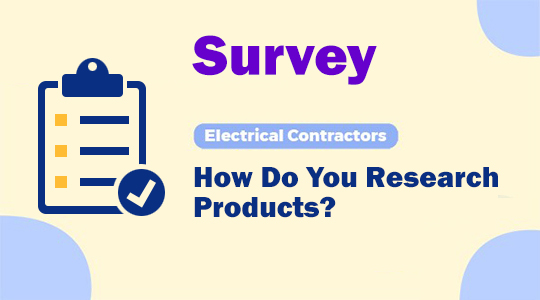
Six Dirty Words That Can Soil and Spoil Your Marketing Plans
John Favalo, Managing Partner, EMA Group B2B
In the conference room, faces drooped like wet laundry. Fingers poked at
the tabletop making invisible squiggles. The hazy unknowing was too
dense even for mobiles and email. “This product should have taken off
like a rocket,” the GM said. “When a product cuts labor by at least 50%,
and it’s priced right, every contractor in business should buy it.”The
product manager offered, “I’ve been asking myself what we missed. We
covered sales; they’re trained and equipped. Our distributors bought in
and we prepped their people well.” “Pre-launch media relations resulted
in lots of ink and contractors noticed our advertising. We know that
from the website activity,” added the marcom director. Then the product
manager said, “I don’t get it. There was nothing like it on the market.”
That’s when the haze began to clear.
“Maybe that’s the problem,” the VP marketing said, “maybe it’s too new.” On that note, heads in the room turned and tilted and we all heard the unspoken, “Hmmmmm.”
An EMA team member wrapped it up when she said, “The six dirty words. That’s what’s holding this product back. ”Will the six dirty words cause your launch to fizzle? The Six Dirty Words in construction marketing are, “We’ve always done it this way.”
Many, many contractors are creatures of habit. They trust what works. In our research among four types of contractors, the number one driver of brand preference is “trust.” It’s rational behavior – they can’t afford something that fails and disrupts a project or prompts callbacks. But, it’s highly emotional, too. They must believe in the promise of a brand. A promise broken equals disappointment. Disappointment equals, “I’ll never buy that junk again.”
Our client’s product was truly game changing. It really did lop off half the install time. Not to mention it was cleaner to use, and that saved even more time on the jobsite. The kicker was this: the product functioned at the system-level. It lived throughout the structure. To try the product was to commit to an installation. So, even with price incentives, the perceived risk overshadowed the savings.
Contractors said, “We’ve always installed this product, this way. It works and we rely on that. We’re not taking a chance that this new thing won’t work.”
The six dirty words can foil the best plans for products like this, or far simpler ones. Adoption can languish for tools or supply materials. How do you alter ingrained behavior?
New product or technology adoption is a key area of study for EMA. As a result, our contractor team has identified several ways to change the actions…or inactions of your audiences. Here, we’ll explore how to overcome resistance to change and prompt faster adoption (and sales) of your breakthrough, or even improved products.
In this case, “Giveaway” really helped our client’s product succeed. While demonstrations can help accelerate adoption, in some instances proof-of-concept needs to be more comprehensive. Given that the product was integral to a large building system, the magnitude of risk precluded simple trials and demos. The solution had to be no less comprehensive, and thus…“giveaway.”
Our client was so convinced that the product would deliver outstanding, never-seen-before results, the VP marketing and division president committed to a “giveaway program, plus.” To targeted, highly visible contractors, our client gave away free installations. Yes, all the product needed for an entire project, or a complete component structure within the project, no charge. As the “plus,” our client offered a guarantee – if the product did not perform to promise or if it failed the installation in any way, our client would pay the contractor for the time, the trouble and the replacement material.
We suggested adding a quid-pro-quo: require the contractor to agree to a case history of the installation documented by video. We’d use the testimonial with broader audiences and build stories around it for distribution to the press. We’d also use video releases for online properties and as sales tools.
“Giveaway” gained traction and ultimately drove momentum. A small number of projects got done with the new product and the case histories were compelling and convincing. Smartly, our client leveraged this small program into big results. They used these “betas” as referrals in proposals to other contractors. In addition, the satisfied contractors spread the word personally and digitally. Today, adoption is high and our client’s product nears category leadership.
If you’re planning a launch, perhaps building in a “giveaway” up front will accelerate acceptance and purchasing. But, even if “giveaway” isn’t appropriate there are other means to solve the problem. Watch for more on the ways you can clean up by swearing off those “Six Dirty Words.”
Tell us what you think. Email us today: BFloyd@ElectricSmarts.com.
“Maybe that’s the problem,” the VP marketing said, “maybe it’s too new.” On that note, heads in the room turned and tilted and we all heard the unspoken, “Hmmmmm.”
An EMA team member wrapped it up when she said, “The six dirty words. That’s what’s holding this product back. ”Will the six dirty words cause your launch to fizzle? The Six Dirty Words in construction marketing are, “We’ve always done it this way.”
Many, many contractors are creatures of habit. They trust what works. In our research among four types of contractors, the number one driver of brand preference is “trust.” It’s rational behavior – they can’t afford something that fails and disrupts a project or prompts callbacks. But, it’s highly emotional, too. They must believe in the promise of a brand. A promise broken equals disappointment. Disappointment equals, “I’ll never buy that junk again.”
Our client’s product was truly game changing. It really did lop off half the install time. Not to mention it was cleaner to use, and that saved even more time on the jobsite. The kicker was this: the product functioned at the system-level. It lived throughout the structure. To try the product was to commit to an installation. So, even with price incentives, the perceived risk overshadowed the savings.
Contractors said, “We’ve always installed this product, this way. It works and we rely on that. We’re not taking a chance that this new thing won’t work.”
The six dirty words can foil the best plans for products like this, or far simpler ones. Adoption can languish for tools or supply materials. How do you alter ingrained behavior?
New product or technology adoption is a key area of study for EMA. As a result, our contractor team has identified several ways to change the actions…or inactions of your audiences. Here, we’ll explore how to overcome resistance to change and prompt faster adoption (and sales) of your breakthrough, or even improved products.
In this case, “Giveaway” really helped our client’s product succeed. While demonstrations can help accelerate adoption, in some instances proof-of-concept needs to be more comprehensive. Given that the product was integral to a large building system, the magnitude of risk precluded simple trials and demos. The solution had to be no less comprehensive, and thus…“giveaway.”
Our client was so convinced that the product would deliver outstanding, never-seen-before results, the VP marketing and division president committed to a “giveaway program, plus.” To targeted, highly visible contractors, our client gave away free installations. Yes, all the product needed for an entire project, or a complete component structure within the project, no charge. As the “plus,” our client offered a guarantee – if the product did not perform to promise or if it failed the installation in any way, our client would pay the contractor for the time, the trouble and the replacement material.
We suggested adding a quid-pro-quo: require the contractor to agree to a case history of the installation documented by video. We’d use the testimonial with broader audiences and build stories around it for distribution to the press. We’d also use video releases for online properties and as sales tools.
“Giveaway” gained traction and ultimately drove momentum. A small number of projects got done with the new product and the case histories were compelling and convincing. Smartly, our client leveraged this small program into big results. They used these “betas” as referrals in proposals to other contractors. In addition, the satisfied contractors spread the word personally and digitally. Today, adoption is high and our client’s product nears category leadership.
If you’re planning a launch, perhaps building in a “giveaway” up front will accelerate acceptance and purchasing. But, even if “giveaway” isn’t appropriate there are other means to solve the problem. Watch for more on the ways you can clean up by swearing off those “Six Dirty Words.”
Tell us what you think. Email us today: BFloyd@ElectricSmarts.com.







